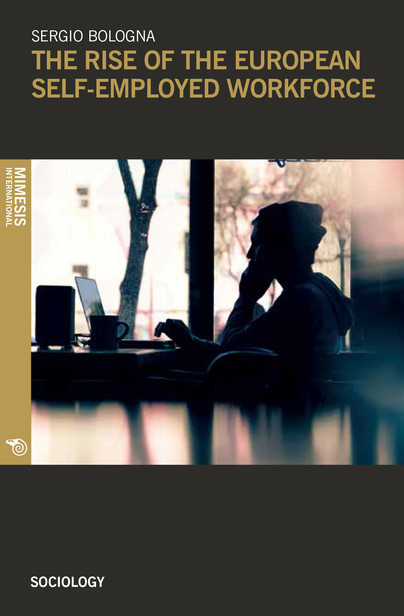
Format: Paperback
Pages: 262
ISBN: 9788869770647
Pub Date: 26 Mar 2018
Series: Sociology
Description:
Sergio Bologna has long been one of the sharpest analysts and critics of the changing structures in the contemporary labour market. In this new volume, the Italian thinker focuses on the phenomenon of ‘freelance workers’, and particularly of knowledge workers, not just as another segment within the global workforce, but as an emerging category striving to construct its own identity. Far from limiting his analysis to the realm of the economy, Bologna investigates the difference between employees and freelancers also in terms of their existential experiences and of their social relationships, both in the public and private sphere.
On this basis, Bologna argues that the development of a shared identity among freelancers can function as the first step to establishing a network of cooperation and solidarity, all the way to the creation of a union of freelance workers. Himself a freelance worker, Sergio Bologna offers the reader a powerful and passionate argument for political and existential change in the 21st century.
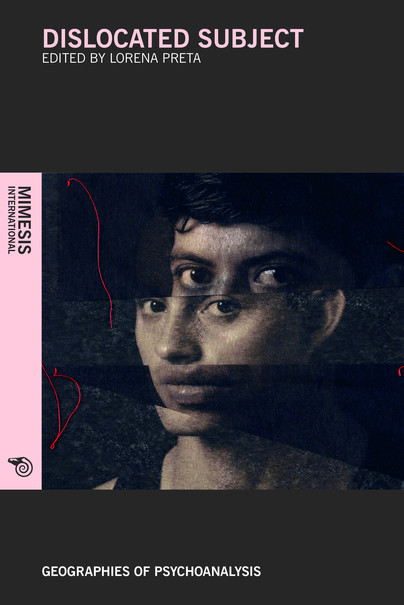
Format: Paperback
Pages: 106
ISBN: 9788869771071
Pub Date: 15 Mar 2018
Series: Geographies of Psychoanalysis
Description:
“The time is out of joint”. This famous line from William Shakespeare’s Hamlet helps to describe the impression of de-centering, of deconstruction, which we currently live and experience. This phenomenon is caused by various factors and while it is happening worldwide, partly as a result of globalization, it is perceived in different ways in the various cultures and countries in the world.
We find ourselves in front of an hybrid individual, the product of different cultures blending together. Such is the novelty and the spread of new means of communication and of social organization, that we might be witnessing the rise of a new type of subject: a bearer of transformations, the extent of which is difficult to measure. The contemporary world is dominated by radically new media, virtual space, technologies that subvert the perception of our body, post-humanism tending towards the cyborg, a cult of the body and youth, new definitions of sexuality, of procreation and of the family – all this reveals to us an overflowing of the subject in the direction of a dislocated fragmentation, lying far beyond its traditional boundaries and identity.
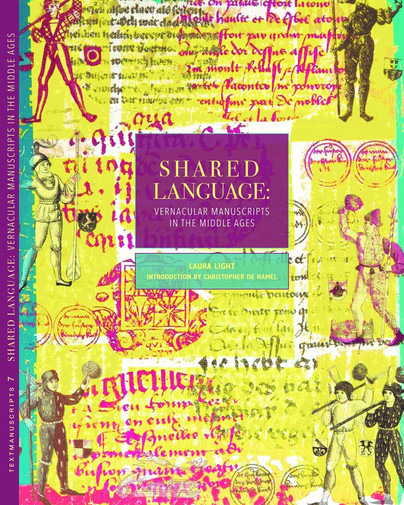
Format: Paperback
Pages: 128
ISBN: 9780997184204
Pub Date: 11 Mar 2018
Imprint: Les Enluminures
Description:
Most people today think of the Middle Ages as a time when cloistered monks wrote and read only in now-obscure languages. Of course, Latin was the language of those who aspired to literacy, and it was the language of the Church. But what many do not realize is that by the thirteenth and fourteenth century (and certainly well before Columbus discovered America in 1492), numerous books became available in the everyday languages spoken “at the court, on the street, and in the bedroom.
” This catalogue focuses on just such manuscripts, written for people at diverse levels of society, not only the privileged aristocracy, but doctors, artisans, townspeople, women, the clergy, and the lay devout. The Middle Classes imitated the nobility in commissioning vernacular manuscripts. Texts of patriotic history and good manners and courtly romance entered manorial households. Literacy moved away from the Latin-based monopoly of the Church. It may be that the owners were actually reading texts themselves, whereas a great prince or king of an earlier generation would often have heard a story read aloud. By the fourteenth century the mercantile classes needed to read in order to conduct commerce, and it was usually in their own languages. At the end of the Middle Ages probably most people in towns had some experience of literacy. Conventional Latin texts give a picture of a quite narrow intellectual elite, but the vernacular encompassed everyone. For example, giving advice to widows, a translator puts Saint Jerome’s famous letters into French in a unique copy probably for a high-born woman. She is pictured in the book. Toiling in the Italian metal industry in towns, metalworkers can follow instructions on minting gold and silver coins in their own language. The manuscript is on paper in simple, yet readable script. Fancifully dressed carnival revelers cavort through the streets of medieval Nuremberg throwing fi reworks amidst fl oats and even an occasional elephant; the German text celebrates the sponsoring families of the event. The Founder and President of Les Enluminures (and medievalist), Sandra Hindman reminisces “I have worked on vernacular manuscripts all my life and they are closest to my heart. Like the experience of reading a good book today, vernacular manuscripts off er an adventure into an unknown world that brings to life people, places, and events of long ago.”

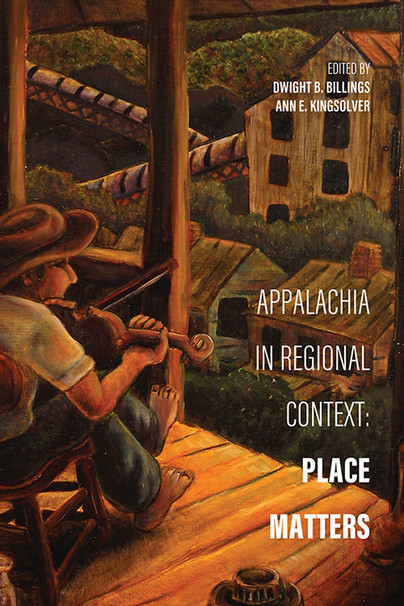
Pages: 264
ISBN: 9780813175324
Pub Date: 02 Mar 2018
Series: Place Matters: New Directions in Appalachian Studies
Illustrations: 14 b/w images, 1 map
Pages: 264
ISBN: 9780813179131
Pub Date: 17 Mar 2020
Series: Place Matters: New Directions in Appalachian Studies
Illustrations: 14 b/w images, 1 map
Description:
In an increasingly globalized world, place matters more than ever. This concept especially holds true in Appalachian studies -- a field that brings scholars, activists, artists, and citizens together around the region to contest misappropriations of resources and power and to combat stereotypes of isolation and intolerance. In Appalachia in Regional Context: Place Matters, Dwight B.
Billings and Ann E. Kingsolver assemble scholars and artists from a variety of disciplines to broaden the conversation and challenge the binary opposition between regionalism and globalism.In addition to theoretical explorations of place, some of the case studies examine foodways, depictions of gendered and racialized Appalachian identity in popular culture, the experiences of rural LGBTQ youth, and the pitfalls and promises of teaching regional studies. Drawing on ideas from cultural anthropology, sociology, and a variety of other fields, and interleaved with poems by bell hooks, this volume furthers the examination of new perspectives on one of America's most compelling and misunderstood regions.
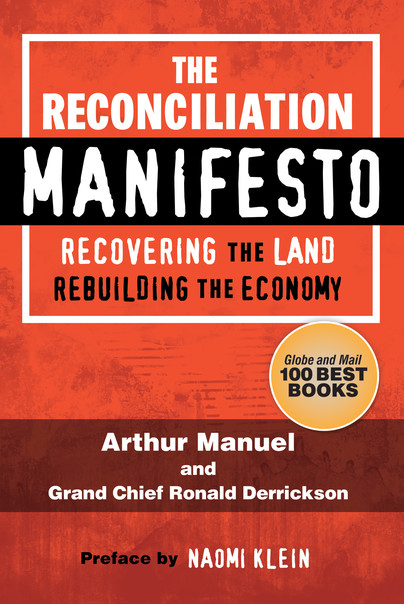
Format: Paperback
Pages: 312
ISBN: 9781459409613
Pub Date: 28 Feb 2018
Description:
In this book Arthur Manuel and Grand Chief Ronald Derrickson challenge virtually everything that non-Indigenous Canadians believe about their relationship with Indigenous Peoples and the steps that are needed to place this relationship on a healthy and honourable footing. Manuel and Derrickson show how governments are attempting to reconcile with Indigenous Peoples without touching the basic colonial structures that dominate and distort the relationship. They review the current state of land claims.
They tackle the persistence of racism among non-Indigenous people and institutions. They celebrate Indigenous Rights Movements while decrying the role of government-funded organizations like the Assembly of First Nations. They document the federal government's disregard for the substance of the United Nations Declaration on the Rights of Indigenous Peoples while claiming to implement it. These circumstances amount to what they see as a false reconciliation between Indigenous and non-Indigenous Canadians. Instead, Manuel and Derrickson offer an illuminating vision of what Canada and Canadians need for true reconciliation.In this book, which Arthur Manuel and Ron Derrickson completed in the months before Manuel's death in January 2017, readers will recognize their profound understanding of the country, of its past, present, and potential future.Expressed with quiet but firm resolve, humour, and piercing intellect The Reconciliation Manifesto will appeal to both Indigenous and non-Indigenous people who are open and willing to look at the real problems and find real solutions.
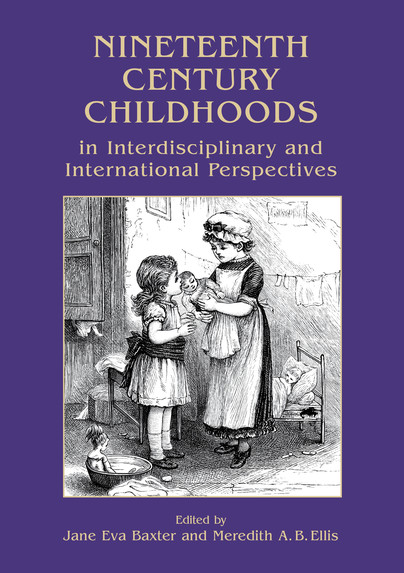
Format: Paperback
Pages: 224
ISBN: 9781785708435
Pub Date: 27 Feb 2018
Series: Childhood in the Past Monograph
Illustrations: b/w
Description:
The nineteenth century was a time when the world was becoming increasingly connected through global forces and networks. Colonial and capitalist expansion was bringing the world into closer contact, while nationalism and forms of indigenous resistance were shaping and moulding the world on more local and regional scales. This dynamic environment was the backdrop for a time when childhood was becoming significantly elaborated as a cultural category of identity.
Institutions, objects, and places specifically designed for children were multiplying at an unprecedented rate; writing about children in fiction and non-fiction became increasingly prolific; and the concern for children’s health and well-being in life and death was paramount in many communities. Scholarship on the nineteenth century spans many disciplines and areas of interest and utilizes diverse and abundant source material to study a period recognized as foundational for our modern, globalized world. This volume brings together scholars from archaeology, art history, bioarchaeology, educational history, history, literary studies, and theatre history to present studies of nineteenth century children and childhood in Australia, the Bahamas, Canada, England, Ireland, Native North America, Romania, Russia, and the United States. The interdisciplinary focus of this volume illustrates the wealth of sources, methods, and perspectives that can be used to develop our understandings of childhood in the nineteenth century, and the international scope of the studies offers a platform to engage commonalities in an increasingly globalized world alongside an appreciation for local, regional, and national variations in the cultural creation and experiences of childhood.
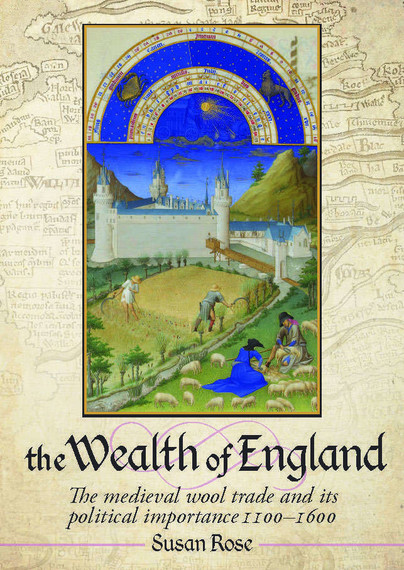
Format: Hardback
Pages: 238
ISBN: 9781785707360
Pub Date: 21 Feb 2018
Illustrations: b/w and colour
Description:
The wool trade was undoubtedly one of the most important elements of the British economy throughout the medieval period - even the seat occupied by the speaker of the House of lords rests on a woolsack. In The Wealth of England Susan Rose brings together the social, economic and political strands in the development of the wool trade and show how and why it became so important. The author looks at the lives of prominent wool-men; gentry who based their wealth on producing this commodity like the Stonors in the Chilterns, canny middlemen who rose to prominence in the City of London like Nicholas Brembre and Richard (Dick) Whittington, and men who acquired wealth and influence like William de la Pole of Hull.
She examines how the wealth made by these and other wool-men transformed the appearance of the leading centres of the trade with magnificent churches and other buildings. The export of wool also gave England links with Italian trading cities at the very time that the Renaissance was transforming cultural life. The complex operation of the trade is also explained with the role of the Staple at Calais to the fore leading to a discussion on the way the policy of English kings, especially in the fourteenth century, was heavily influenced by trade in this one commodity. No other book has treated this subject holistically with its influence on the course of English history made plain.

Format: Hardback
Pages: 256
ISBN: 9781459409972
Pub Date: 19 Feb 2018
Description:
Why have democratic governments failed to take serious steps to reduce carbon emissions despite dire warnings and compelling evidence of the profound and growing threat posed by global warming? Most of the writing on global warming is by scientists, academics, environmentalists, and journalists. Kevin Taft, a former leader of the opposition in Alberta, brings a fresh perspective through the insight he gained as an elected politician who had an insider's eyewitness view of the role of the oil industry.
His answer, in brief: The oil industry has captured key democratic institutions in both Alberta and Ottawa.Taft begins his book with a perceptive observer's account of a recent court casein Ottawa which laid bare the tactics and techniques of the industry, its insiders and lobbyists. He casts dramatic new light on exactly how corporate lobbyists, politicians, bureaucrats, universities, and other organizations are working together to pursue the oil industry's agenda.He offers a brisk tour of the recent work of scholars who have developed the concepts of the deep state and institutional capture to understand how one rich industry can override the public interest.Taft views global warming and weakened democracy as two symptoms of the same problem — the loss of democratic institutions to corporate influence and control. He sees citizen engagement and direct action by the public as the only response that can unravel big oil's deep state.
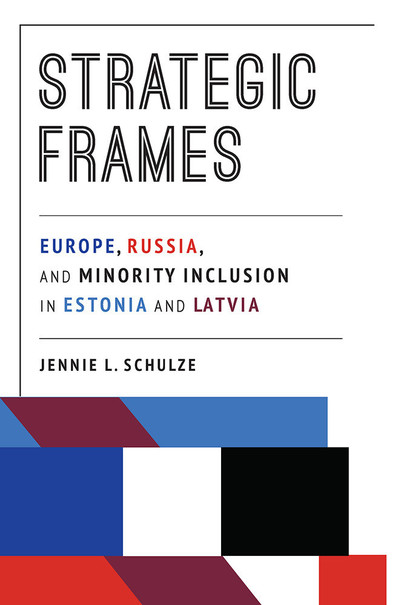
Format: Paperback
Pages: 416
ISBN: 9780822965114
Pub Date: 09 Feb 2018
Description:
Strategic Frames analyzes minority policies in Estonia and Latvia following their independence from the Soviet Union. It weighs the powerful influence of both Europe and Russia on their policy choices, and how this intersected with the costs and benefits of policy changes for the politicians in each state. Prior to EU accession, policymakers were slow to adopt minority-friendly policies for ethnic Russians despite mandates from the European Union.
These initiatives faced majority opposition, and politicians sought to maintain the status quo and their positions. As Jennie L. Schulze reveals, despite the credit given to the democratizing influence of European institutions, they have rarely produced significant policy changes alone, and then only when domestic constraints were low. Whenever domestic opposition was high, Russian frames were crucial for the passage of reforms. In these cases, Russia’s activism on behalf of Russian speakers reinforced European frames, providing powerful justifications for reform. Schulze’s attention to both the strategic framing and counter framing of external actors explains the controversies, delays, and suboptimal outcomes surrounding the passage of “conditional” amendments in both cases, as well as the local political climate postaccession. Strategic Frames offers a significant reference on recent developments in two former Soviet states and the rapidly evolving spheres of political influence in the postindependence era that will serve students, scholars, and policymakers alike.
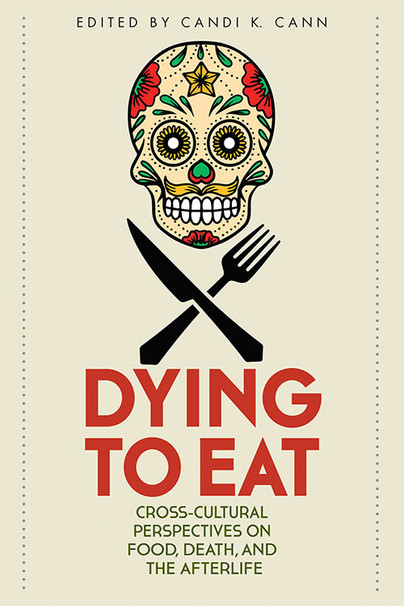
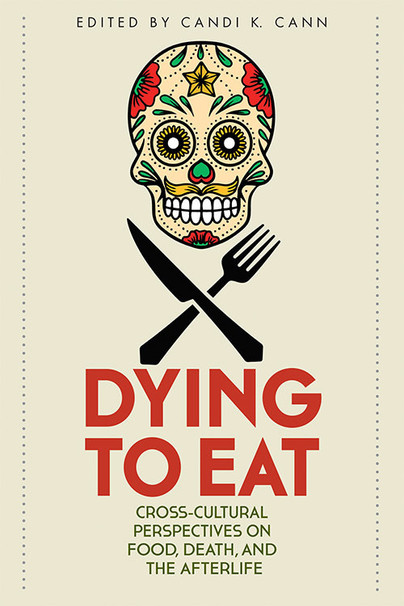
Pages: 208
ISBN: 9780813174693
Pub Date: 05 Jan 2018
Series: Material Worlds
Illustrations: 7 b&w photos
Pages: 208
ISBN: 9780813178516
Pub Date: 10 Dec 2019
Series: Material Worlds
Illustrations: 7 b&w photos
Description:
Food has played a major role in funerary and memorial practices since the dawn of the human race. In the ancient Roman world, for example, it was common practice to build channels from the tops of graves into the crypts themselves, and mourners would regularly pour offerings of food and drink into these conduits to nourish the dead while they waited for the afterlife. Funeral cookies wrapped with printed prayers and poems meant to comfort mourners became popular in Victorian England; while in China, Japan, and Korea, it is customary to offer food not only to the bereaved, but to the deceased, with ritual dishes prepared and served to the dead.
Dying to Eat is the first interdisciplinary book to examine the role of food in death, bereavement, and the afterlife. The contributors explore the phenomenon across cultures and religions, investigating topics including tombstone rituals in Buddhism, Catholicism, and Shamanism; the role of death in the Moroccan approach to food; and the role of funeral casseroles and church cookbooks in the Southern United States. This innovative collection not only offers food for thought regarding the theories and methods behind these practices but also provides recipes that allow the reader to connect to the argument through material experience. Illuminating how cooking and corpses both transform and construct social rituals, Dying to Eat serves as a fascinating exploration of the foodways of death and bereavement.
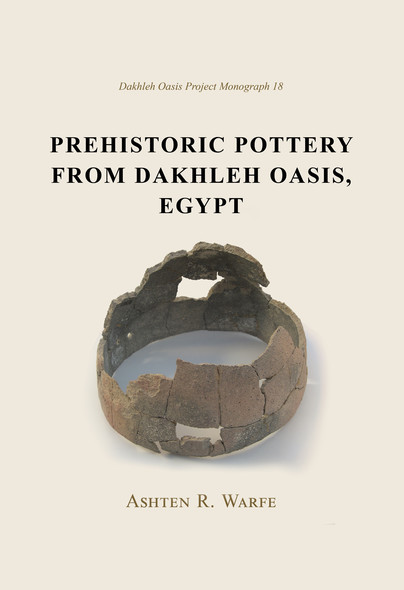
Format: Paperback
Pages: 144
ISBN: 9781785708244
Pub Date: 21 Dec 2017
Series: Dakhleh Oasis Project Monographs
Illustrations: b/w and colour
Description:
As one of the few surviving artefacts from the late prehistory of north-east Africa, pottery serves as an essential material category by which to explore long-term human development. This book presents a major study on the ceramics recovered from early and mid-Holocene sites in Egypt’s Dakhleh Oasis, which come from 96 registered sites and five other findspots and comprise more than 10,000 sherds. In addition, there is little proxy evidence to support the manufacture of pottery in the form of kilns, clay firedogs, and other firing equipment.
None of the ceramic objects come from burials. They derive instead from settlement sites that display evidence of living activities (hut circles, hearths, chipped stone scatters, etc.), or sites for which there is no other evidence of human activity. Through detailed description, classification and quantification, a detailed cultural sequence has been determined, demonstrating descrete stylistic variations between sites and over time, and highlighting growing diversity and innovation in local pottery-making from the late seventh to mid-third millennia cal. BC. These shifts help to refine the characterisation of local cultural units within the Holocene sequence for Dakhleh Oasis, and to compare against parallel pottery traditions elsewhere in the desert. A firmer grounding in the oasis ceramics, as detailed here, offers inroads to examine social practices and the interconnectedness of desert groups of the ancient Eastern Sahara.

Format: Hardback
Pages: 245
ISBN: 9789088904776
Pub Date: 15 Dec 2017
Series: Mededelingen van het Rijksmuseum voor Volkenkunde
Illustrations: 69fc/11bw
Description:
Every year, in the last month of the Islamic calendar, millions of Muslims from around the world come together in Mecca to perform the Hajj, the pilgrimage that all capable Muslims should perform at least once in their lives. In 2013, the National Museum of Ethnology in Leiden organised the exhibition Longing for Mecca. The Pilgrim’s Journey.
The chapters in this volume are the outcome of the two-day symposium on the Hajj, which was held at the museum in connection to the exhibition. The central theme that runs through the book is how Hajj practices, representations of Mecca and the exchange of Hajj-related objects have changed over time. The chapters in the first part of the book discuss religious, social, and political meanings of the Hajj. Here the relationship is addressed between the significance of pilgrimage to Mecca for the religious lives of individuals and groups and the wider contexts that they are embedded in. Together, these anthropological contributions provide insights into the effects on Hajj practices and meanings for present-day Muslims caused by current dimensions of globalisation processes. The second part of the book takes material expressions of the Hajj as its starting point. It explores what Hajj-related artefacts can tell us about the import of pilgrimage in the daily lives of Muslims in the past and present. The contributions in this part of the volume point out that Mecca has always been a cosmopolitan city and the nodal point of global interactions far exceeding religious activities. Together, the chapters in this book depict the Hajj ritual as a living tradition. Each with its own focus, the various contributions testify to the fact that, while the rites that make up the Hajj were formulated and recorded in normative texts in early Islam, details in the actual performance and interpretations of these rites are by no means static, but rather have evolved over time in tandem with changing socio-political circumstances.

Format: Hardback
Pages: 264
ISBN: 9789188168825
Pub Date: 17 Nov 2017
Illustrations: b/w illus
Description:
Migration in all its forms is a prominent phenomenon, with far-ranging implications for society. Museums, being important educational institutions, not only reflect society, but what they display has the potential to affect our understanding of the world. When museums become places where people can explore the realities of migration, transnational connections, and human rights, they becomeeven more relevant as cultural institutions, and can help drive positive social change, encouraging solidarity and sustainable development.
In Museums in a time of migration, leading scholars and museum curators reflect on museums engagement in migration issues. New and innovative museum projects around the world are presented in telling analyses of the theoretical and practical realities. Special attention is paid to the museums roles, representations, collections, and collaborations in a time of migration.

Format: Paperback
Pages: 248
ISBN: 9780822965084
Pub Date: 15 Nov 2017
Illustrations: 48 b&w Illustrations
Description:
From Belonging to Belief presents a nuanced ethnographic study of Islam and secularism in post-Soviet Central Asia, as seen from the small town of Bazaar-Korgon in southern Kyrgyzstan. Opening with the juxtaposition of a statue of Lenin and a mosque in the town square, Julie McBrien proceeds to peel away the multiple layers that have shaped the return of public Islam in the region. She explores belief and nonbelief, varying practices of Islam, discourses of extremism, and the role of the state, to elucidate the everyday experiences of Bazaar-Korgonians.
McBrien shows how Islam is explored, lived, and debated in both conventional and novel sites: a Soviet-era cleric who continues to hold great influence; popular television programs; religious instruction at wedding parties; clothing; celebrations; and others. Through ethnographic research, McBrien reveals how moving toward Islam is not a simple step but rather a deliberate and personal journey of experimentation, testing, and knowledge acquisition. Moreover she argues that religion is not always a matter of belief - sometimes it is essentially about belonging. From Belonging to Belief offers an important corrective to studies that focus only on the pious turns among Muslims in Central Asia, and instead shows the complex process of evolving religion in a region that has experienced both Soviet atheism and post-Soviet secularism, each of which has profoundly formed the way Muslims interpret and live Islam.
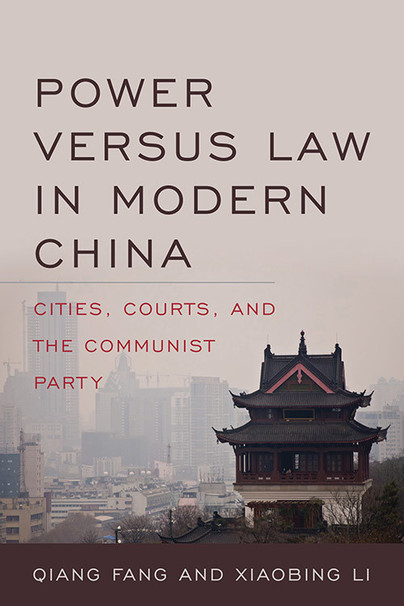
Format: Hardback
Pages: 286
ISBN: 9780813173931
Pub Date: 15 Nov 2017
Description:
Today 700 million Chinese citizens -- more than fifty-four percent of the population -- live in cities. The mass migration of rural populations to urban centers increased rapidly following economic reforms of the 1990s, and serious problems such as overcrowding, lack of health services, and substandard housing have arisen in these areas since. China's urban citizens have taken to the courts for redress and fought battles over failed urban renewal projects, denial of civil rights, corruption, and abuse of power.
In Power versus Law in Modern China, Qiang Fang and Xiaobing Li examine four important legal cases that took place from 1995 to 2013 in the major cities of Wuhan, Xuzhou, Shanghai, and Chongqing. In these cases, citizens protested demolition of property, as well as corruption among city officials, developers, and landlords; but were repeatedly denied protection or compensation from the courts. Fang and Li explore how new interest groups comprised of entrepreneurs and Chinese graduates of Western universities have collaborated with the CCP-controlled local governments to create new power bases in cities. Drawing on newly available official sources, private collections, and interviews with Chinese administrators, judges, litigants, petitioners, and legal experts, this interdisciplinary analysis reveals the powerful and privileged will most likely continue to exploit the legal asymmetry that exists between the courts and citizens.
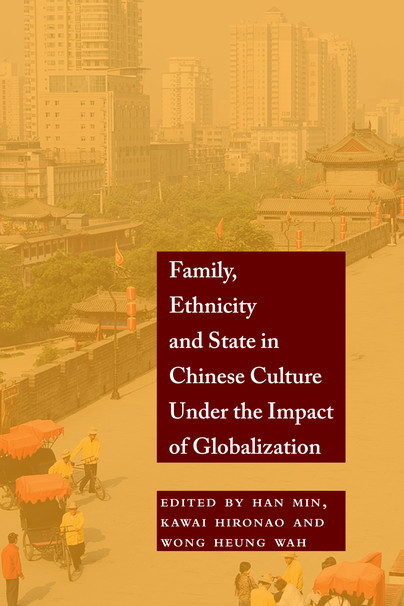
Format: Paperback
Pages: 320
ISBN: 9781626430525
Pub Date: 02 Nov 2017
Description:
This collection of papers from a project of the National Museum of Ethnology in Japan, unites anthropologists in an international collaborative effort to reexamine the dynamics of family, ethnicity, and the nation-state in China and in overseas Chinese society. Using ethnographic fieldwork, this book sheds light on the interactions between state, society, and identity through a variety of channels, such as family, lineage, kinship or quasi-kinship network, national frameworks such as religion association, Minority Autonomous Regions, and ethnic dress. This research demonstrates that even for the same cultural phenomenon, the discourses at the common, the elite, and the institutional levels will be adjusted based on the needs of the social context, market economy, and global networks.



















